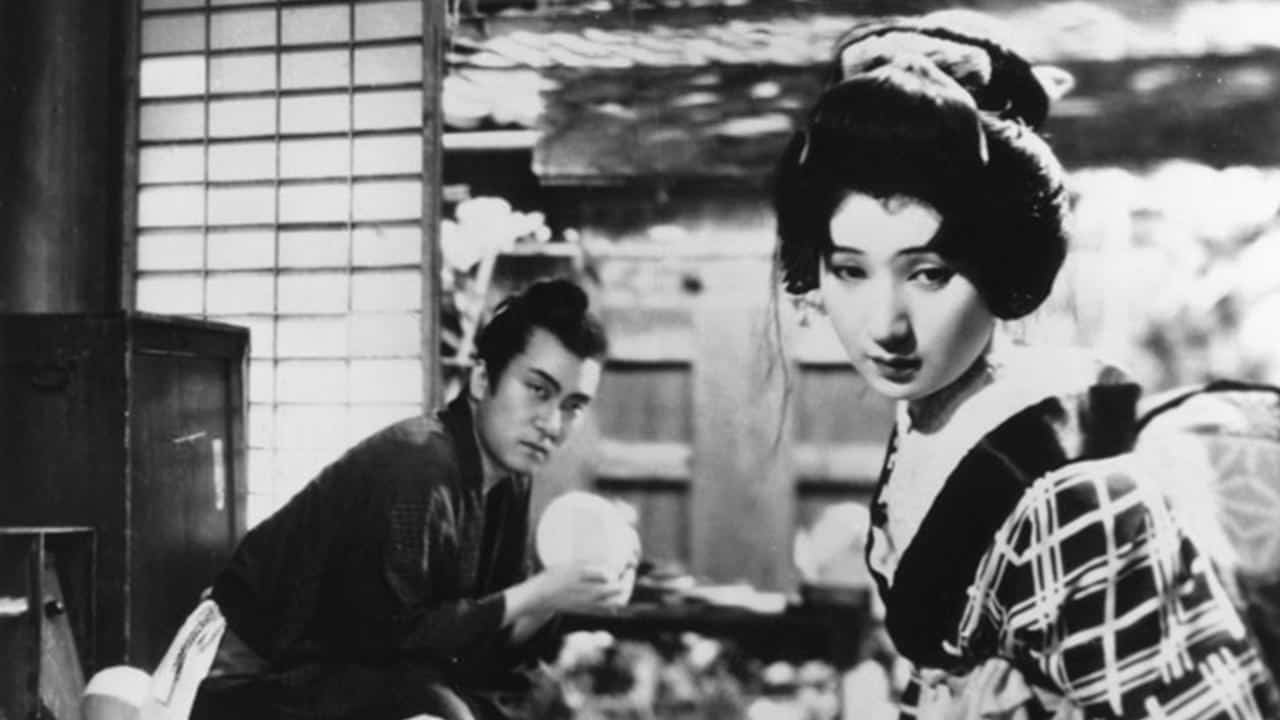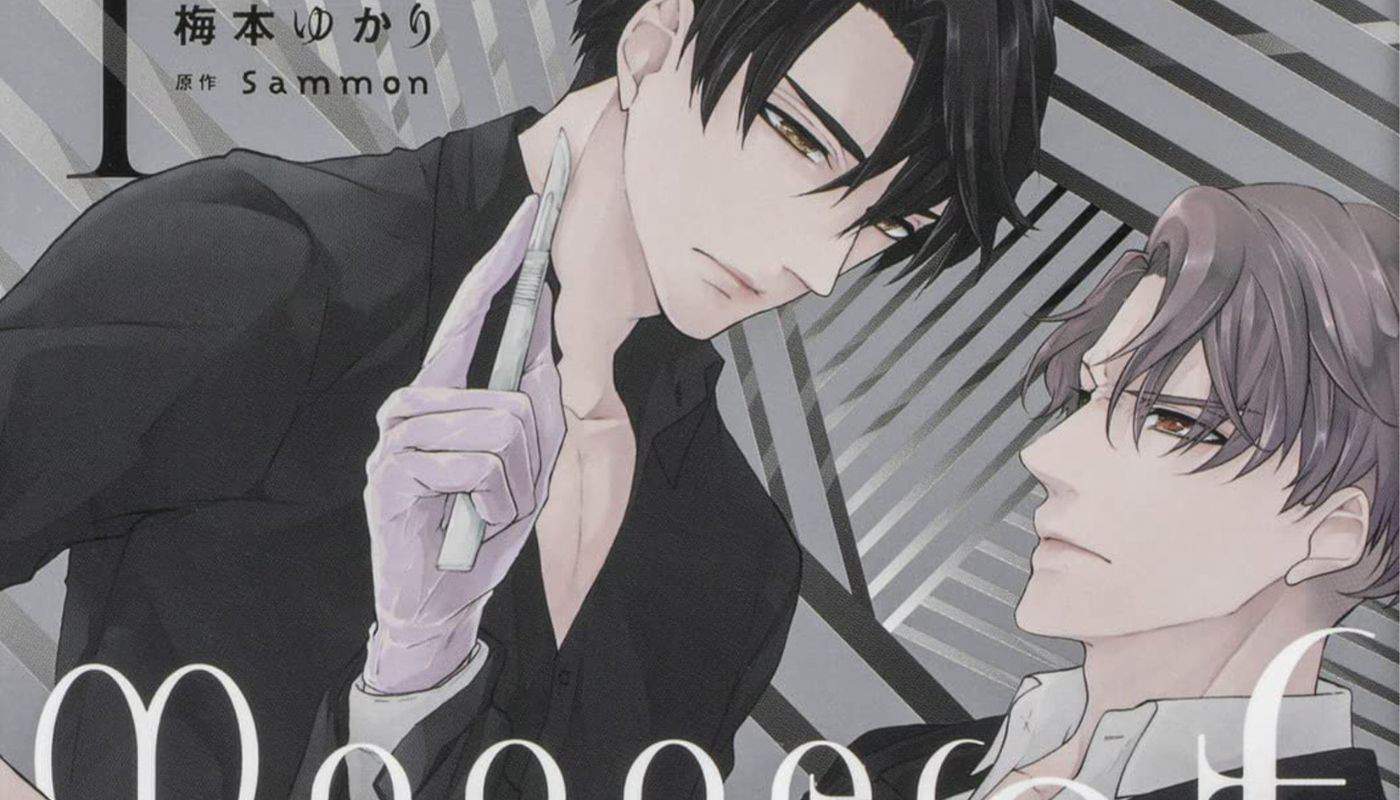Based on two stories by Syugoro Yamamoto, “The Smell of an Unknown Flower” and ”Before the Dew Dries”, the script of “The Sea is Watching” was written by Akira Kurosawa, who did not manage to see it becoming a film, though, as he died in 1998. Kei Kumai eventually directed it, in a rare approach to stories about the pre-Meiji era, as it focuses not on geishas, but prostitutes.
Buy This Title
on Imprint Asia by clicking on the image below
The setting is a village that would later become part of Tokyo, circa 1868, in the red-lights district, which is separated from the rest of the area by a river. O-shin is a somewhat naive prostitute who always falls for the people in need, something that the other girls make fun of her, including Kikuno, who has taken upon herself the role of protecting the young girl from herself. However, as the story begins, a young samurai named Fusanosuke, who has disgraced himself by getting drunk, killing someone and losing his sword, seeks solace in the brothel the girls are working for. Initially, he is turned away, but O-shin decides to help him, disguising him and having him act as a regular customer, which actually convinces his pursuers to leave him alone. After he is banished from his father's house, Fusanosuke returns to her again and again, and the prospect for marriage and escape from the particular life becomes a true possibility for O-shin.
Alas, fate has other plans while eventually, another samurai who has been hard on luck, Ryosuke, enters the girl's life. Kikuno also has her own issues, with an old flame, Ginji, exploiting her anyway he can, even becoming violent with her, while her way out is personified in the face of Zenbei, an elderly, kind-hearted client who wants to take her with him.
There is an artificiality permeating the movie, that frequently winks at stage play aesthetics, in a fashion, though, that can only be described as fitting for the style of the story. That the whole thing was shot in a studio is the main source of this sense (in a tendency that seems so distant nowadays) particularly in the way the sets are implemented, which actually extends to the occasional theatricality in the acting, and the scenes that take place in the street in front of the brothels. Especially regarding the acting, the sequence when the theater actor and his friend visit the ‘house' is the apogee of this approach, in one of the most amusing parts of the whole movie, which does extend, nevertheless, all over.
The comments Kurosawa and Kumai wanted to present here are not particularly deep, but remain quite intriguing, almost always with a wink towards the drama. The strictness of Bushido and the way it clearly and cruelly fragmented Japanese society, essentially having the samurai on the top and everyone else in the bottom, becomes quite clear here. The same applies to the difference in place in society between men and women, with the latter definitely being on the lower end. However, Kumai plays with the concept here, by having samurais in need being saved by prostitutes, in an approach that can only be described as playful, while being the main source of drama here. The whole concept of Kikuno being from a samurai genealogy concludes this aspect, again in the same paths.
The way water, frequently the sea, eventually the rain, and the combination of two in the end is implemented is also exceptional, as by the end, the concept is induced with an ominous hypostasis that provides a relief (catharsis if you prefer) from all the drama. At the same time, the last part shows that in front of nature, status and class do not play any role, in a rather appealing, if somewhat romanticized comment.
It is also in these sequences where the production values of the movie find their apogee, with Kazuo Okahara's cinematography capturing the bittering end with gusto, and the starry night (even if artificial again) proving a most pleasant background. The moments of fighting and the disaster are quite impressive to watch, adding to the drama, with Osamu Inoue's editing also finding its zenith during this part. Regarding the editing, the pace is relatively fast, suiting the episodic style of the narrative, although some lagging here and there, and particularly close to the finale does exist.
If you like The Sea is Watching, check also this article
Sensualism is also a factor in the film, considering its main premise, but there is very little nudity (mostly through naked backs and some hinting at the breasts area) and even less titillation, with Kumai treating the erotic as another part of the narrative than the focus, in a choice that fits the overall aesthetics of the film.
Misa Shimizu as Kikuno and Nagiko Tono as O-shin present the two sides of the same coin, the former being disillusioned and the latter hopelessly romantic in the best fashion, with their chemistry being among the best parts of the movie. Hidetaka Yoshioka as Fusanosuke highlights his transformation nicely, although he ones who steal the show here are Eiji Okuda as the villain Ginji, Masatoshi Nagase as the ‘deus-ex-machina' Ryosuke and Renji Ishibashi as Zenbei. The three of them are the ones that put the flavor in the movie, through their rather competent performances.
Although not of the caliber of Kurosawa movies, “ The Sea is Watching” is still a very competently written, shot, directed and acted film that manages to shed light in an aspect of the Japanese society of the samurai era that is not exactly common in the country's cinema.















